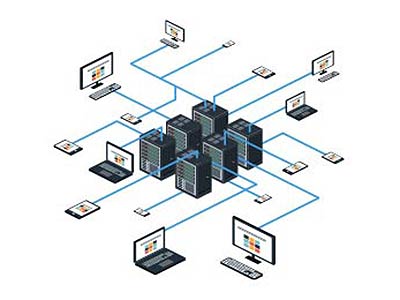In today's rapidly evolving technological landscape, control rooms are increasingly shifting towards Internet Protocol (IP)-based KVM solutions. This migration offers enhanced flexibility, cost-effectiveness, and scalability, but transitioning to IP KVM also presents unique challenges and considerations, particularly in control room environments.
The backbone of any IP-based control room solution is a robust network infrastructure. Before shifting to IP, it’s essential to evaluate the existing network capacity and determine if it can handle the increased data load. This might involve upgrading routers, switches, and other network components to ensure seamless connectivity and high-speed data transmission.
With the increasing use of virtual machines, it’s vital that IP KVM solutions integrate support for various virtual machine protocols, such as RDP, RemoteFX, PCoIP, and PCoIP Ultra. For virtual machine access, some system receivers require an extra transmitter to connect a VM, adding more devices to the system, while other systems have the required VM clients included inside the receivers’ units already.
Another consideration is the option for a collaboration of multiple users on the same virtual machine. Commonly, virtual machines connectivity is a one-to-one connection and only one user can access a VM session at a time. However, some systems on the market support system add-ons that give multiple users simultaneous access to the same VM.

Security is a paramount concern when transitioning to IP KVM in control rooms. Robust security protocols are essential to safeguard sensitive data and critical systems. This includes implementing firewalls, encryption, and secure access controls. Compliance with industry standards and regulations is equally critical to avoid legal issues and maintain trust.
IP KVM technology securely keeps servers and virtual machines separate from users. Servers used in many industries can be safely stored in a separate room anywhere in the world and control room operators can access multiple physical and virtual servers remotely via a single keyboard and mouse.
A KVM system must support user authentication and advanced user access management including Active Directory (AD). The KVM system itself must support end-to-end encryption. Trusted providers of KVM systems provide firmware updates to maintain the security of the products in the field. Some KVM solutions on the market can isolate single servers with confidential data from open systems using military-grade security.

Control rooms often rely on real-time communications and video streaming, which require substantial bandwidth and low latency. Evaluating current bandwidth capabilities and forecasting future needs are critical steps. Organizations should consider solutions that can dynamically adjust to varying bandwidth requirements, ensuring consistent performance even during peak usage.
Resilient, reliable, and secure IP deployments are vital. The chosen solution should optimize bandwidth allocation. The KVM system must support extremely low bandwidth usage that would theoretically allow to run the KVM system and network traffic on the same Ethernet. However, a majority of installs prefer to run the KVM system on a separate network for security reasons and to provide enough bandwidth for video-intensive applications. The level of video compression per user ensures that power operators receive the needed bandwidth for real-time data and video processing, while others receive less bandwidth. Optimizing bandwidth usage by user requirements is often based on the tasks they are doing. Look for features like configurable video compression and integration with Active Directory or LDAP for robust security.

Compatibility and interoperability are vital in transitioning to IP-based control rooms. New IP KVM solutions should integrate seamlessly with existing systems and third-party applications, potentially involving middleware or open standards to facilitate communication. When moving from HD to higher resolutions, full interoperability of HD and 4K video at each system endpoint is another requirement.

Consider the user experience - Users work on multiple systems concurrently. Is switching fast and intuitive enough to allow good productivity? Is the system simple to understand with no learning curve? Can users concentrate on the tasks (not on system usage) and does the system support advanced video processing that allows the users to monitor completion of active jobs while working on another project? Does the system support collaboration allowing instant team discussions and fast responses?

Scalability is a key advantage of IP-based solutions in control rooms. Investing in scalable infrastructure and future-proof technologies ensures adaptability and minimizes the risk of costly overhauls.

Transitioning to IP KVM involves changes in technology, organizational culture, and workflows. Proper training and change management are essential for a smooth transition. Organizations should invest in training programs that equip employees with the necessary skills to operate and maintain new systems effectively.

The move to IP KVM in control rooms is a strategic decision requiring careful planning and consideration. By addressing factors like network infrastructure, security, bandwidth, compatibility, user experience, scalability, and training, organizations can ensure a smooth transition. With the right approach, control rooms can unlock the full potential of IP-based solutions, driving innovation and staying competitive in the digital age.
Tom Fitzgerald, Black Box KVM Product Manager, commented: “KVM technology has moved to IP for several key reasons: greater flexibility and scalability through existing network use, remote access capabilities, potential cost savings, and improved security features. In short, IP-based KVM offers a more adaptable and secure solution for managing servers in today's control room environments.”
Ready to make the move? Check out our IP KVM solutions. Our technical experts are ready to answer your questions and help you make an informed decision.
Learn more: